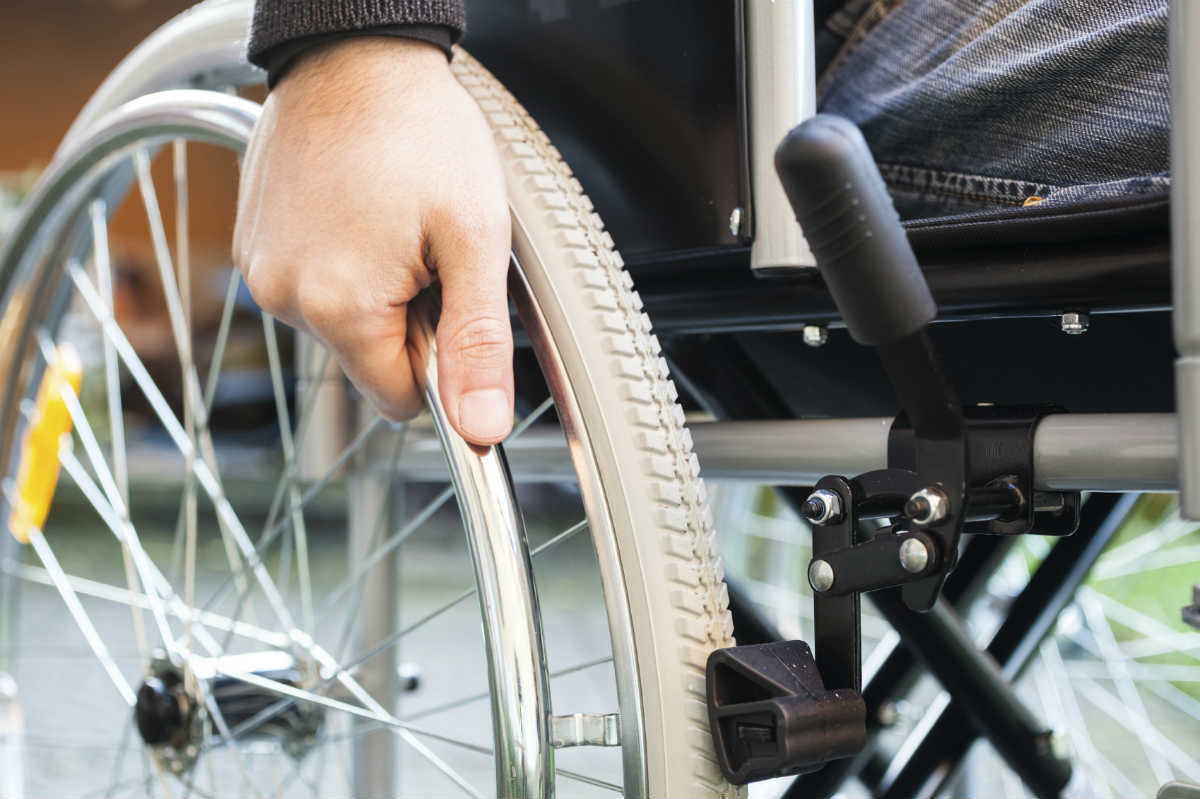Amputations have a tremendous impact on the life of the accident victim – physically, emotionally, and financially.

It is an employer’s responsibility to ensure the safety of all his or her workers. Depending on the nature of the work, an employer may need to provide safety equipment or training to the employees in order to help them avoid accidents or to reduce the severity of possible damages and injuries should an accident occur. For example, if the work requires handling mechanical tools or moving machinery, an employer needs to make sure all workers use helmets or safety gloves to avoid fatal injuries, such as amputations. If an employee loses a hand or a leg due to a workplace accident, he or she is entitled to workers’ compensation benefits.
Reducing the Risk of Workplace Amputations
Precautions should be taken to avoid or reduce the risk of workplace injuries that may result in amputations. Some work environments or factory tools are more likely to result in amputations. Examples include meat cutting devices, meat grinders, drill presses, rolling machines, and milling machines. Employers should arrange training programs to train the workers on how to safely handle these deadly machines.
Working with Machinery
Construction workers face a high risk of on-the-job injuries; even more so when using construction tools like forklifts, hand-powered, or non-powered tools. Even regular maintenance tasks such as threading and cleaning these machines could be dangerous.
It is important for workers to identify the part of the machine most likely to cause serious accidents. In general, the most dangerous part of a machine is its point of operation. Moving blades, flywheels, pulleys, gears, and belts could cause serious injuries to the operator. In some cases, these injuries may result in loss of limbs. Hands, legs, or fingers of a worker may strike with moving components of the machine, resulting in amputations.
Safety Standards and Guidelines for Employers
The Occupational Safety and Health Administration is responsible for enforcing safety standards and guidelines for employers and monitoring whether those guidelines are being implemented in a proper way. Employers need to comply with the regulations for different machines. The specific guidelines for various machines and tools are listed on the OSHA’s website. Minor workers should not be allowed to use certain types of tools or machines. Under the Fair Labor Standards Act, some jobs are prohibited for workers ages 18 or younger. Employers should have knowledge of these rules, regulations, and laws.
Work Related Amputations
To learn more about your rights under the workers’ compensation system, contact a Missouri workers’ compensation attorney from The Law Office of James M. Hoffmann. Call us at (314) 361-4300 for a free consultation.
Work Related Injuries
Work-Related Injuries
Work Related ACL Injury
Leg Amputation
Finger Amputation
Ankle Injury
Ankle Replacement
Arthroscopic Surgery
Work Related Arthritis
Accidental Asphyxiation
Work Related Asthma
Avulsion Injury
Back Injury at Work
Back Pain from Work
Lower Back Pain at Work
Chronic Back Pain
Head Injury Internal Bleeding
Internal Bleeding after Injury
Blood Related Illness
Broken Bones
Brain Injuries
Traumatic Brain Injury
Bursitis Work Related
Burn Injury at Work
Electric Burn
Chemical Burn
Calcaneus Fracture
Sudden Cardiac Arrest
Cardiovascular Disease
Carpal Tunnel Work Related
Cartilage Injury
Cervical Disc Replacement
Cervical Fusion
Chronic Illness
Work Related Chronic Pain
Work Related Concussion
Contagious Disease
Work Related COPD
Skin Corrosion
CRPS Disease
Crush Injuries
Cubital Tunnel Syndrome
Work Related Death
Degenerative Bone Disease
Degenerative Disc Disease Work Related
Reflex Sympathetic Dystrophy
Work Related Tennis Elbow
Elbow Injury
Epicondylitis at Work
Work Related Eye Injury
Fibromyalgia
Work Related Foot Injuries
Work Related Injuries to the Hand
Hand Arm Vibration Syndrome
Work Related Head Injury
Closed Head Injury
Open Head Injury
Work Related Hearing Loss
Heart Attack Work Related
Stroke at Work
Heat Stroke at Work
Intracerebral Hemorrhage
Hernia Work Related Injury
Work Related Herniated Disc
Hip Fracture
Hip Replacement
Hip Injuries
Intracranial Injury
Broken Jaw
Work Related Knee Injuries
Knee Fracture
Laceration
LCL Injury
Legionnaires Disease
Ligament Tear
Limb Loss
Lumbar Disc Replacement
Lumbar Fusion
Lumbar Spinal Fusion
MCL Tear
MCL Injury
Meniscus Tear
Work Related Mental Illness
Mesothelioma from Work
Work Related Muscle Problems
Work Related Neck Pain
Work Related Neck Injury
Nerve Damage from Work Related Injury
Neurological Disorders
Occupational Disease
Organ Damage
Pain and Suffering from Work Related Injury
Paralysis
Patella Fracture
Pelvic Fracture
Plantar Fascitis
Pre Existing Work Related Injury
Work Related PTSD
Radiation Sickness
Repetitive Stress Injury
Rhabdomyolysis
Rotator Cuff Tear
Rotator Cuff Surgery
Work Related Rotator Cuff Injury
Sciatica Work Related
Shift Work Disorder
Shoulder Fusion
Shoulder Impingement
Shoulder Injury
Work Related Shoulder Pain
Sick Building Syndrome
Skull Fracture
Spinal Cord Injury at Work
Spondylolysis
Sprain at Work
Work Related Repetitive Strain Injury
Work Related Stress
Stress Fracture
Subdural Hematoma
Work Related Tendonitis
Lost Tooth at Work
Trigger Finger Work Related
Vertebroplasty
Vision Impairment
Lost Vision at Work
Work Related Wrist Injuries
